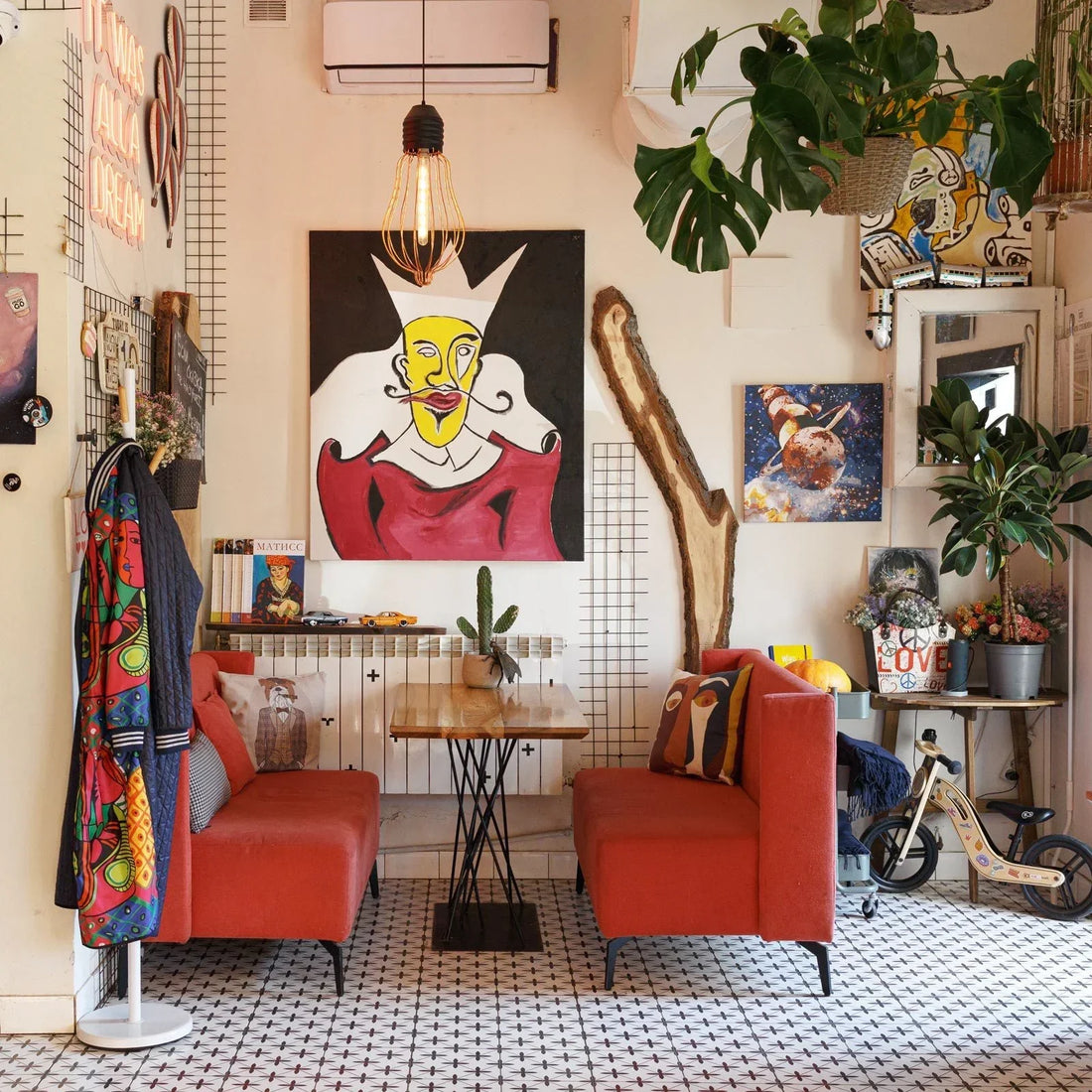
How Gen Z Adopted Dopamine Décor and Made It Better
..and honestly, did it better than anyone expected.
Let’s rewind a bit.
There was a time—post-pandemic, pre-Barbie-core explosion—when home interiors were all about calm, minimalism, and "neutrals that whisper." Think earth tones, Japandi influence, sad beige everything, and candles labeled "moss breath" or "library dusk."
And then Gen Z showed up with a serotonin cannon and blasted all that beige straight to the curb.
Enter: Dopamine Décor—the interior design movement defined by loud colors, unexpected textures, playful shapes, maximalist energy, and vibes so high they practically levitate off the rug. Sure, Millennials dabbled in it. TikTok influencers named it. But it’s Gen Z who took it, ran with it, and made it a full-blown lifestyle.
Let’s unpack how Gen Z made dopamine décor distinctly their own—and why it’s not just a trend, but a cultural shift.
image credit: Azman L
1. It’s Not Just Design—It’s Self-Expression Therapy
To understand Gen Z’s grip on dopamine décor, you first need to understand that they grew up online. Aesthetics aren’t just a vibe—they're an identity.
For Gen Z, a home isn't just where you live. It's:
A curated backdrop for content
A visual mood board for your mental state
A rejection of traditional status design (bye, gray-on-gray Restoration Hardware showrooms)
This generation treats their living space like their Instagram grid or TikTok feed: loud, colorful, deeply personal, and often a little unhinged. In the best way.

image credit: Pinterest
2. The Rise of the Anti-Design Movement
Gen Z doesn't care if your accent wall matches your drapes. They care if it sparks joy, makes you laugh, or looks like it was thrifted from a wizard’s estate sale.
Where previous generations chased cohesion and “good taste,” Gen Z said, “Let’s glue googly eyes on the soap dispenser.”
They’ve fully embraced:
Cluttercore
Kitsch
Frog-shaped lamps
Rainbow checkerboards
Furniture that looks like candy
Dopamine décor under Gen Z's influence is proudly chaotic, mood-lifting, and refreshingly unserious. It’s design without the ego.
image credit: Pinterest
3. It’s Digital-Native Design (Pinterest Is the Architect)
Gen Z has never flipped through a Pottery Barn catalog in their life. Their design education?
TikTok
YouTube thrift hauls
Cottagecore vision boards
“Come decorate with me” videos featuring someone hot painting their bedroom chartreuse at 1 a.m.
Pinterest in particular has become the Gen Z design studio. It’s where ideas are born, evolved, and mood-boarded into existence. No rules, no gatekeeping—just a rabbit hole of creativity that’s as dopamine-boosting as the décor itself.
If you're Gen Z and not using Pinterest daily, are you even designing?
image credit: Steph Wilson
4. Mental Health, But Make It Aesthetic
Here’s where dopamine décor gets real.
Gen Z is the most open generation about mental health—and dopamine décor isn’t just about pretty things. It’s about creating spaces that actively improve your mood. A bright yellow chair isn’t just a chair. It’s sunshine on demand. A mural of dancing strawberries? That’s a serotonin drip.
This isn’t escapism. It’s emotional regulation via throw pillows. And it’s powerful.
When the world feels a bit like it’s burning, your home becomes your sanctuary. Gen Z just decided that sanctuary should also feel like a popsicle party.
5. Sustainability & Secondhand Reign Supreme
Dopamine décor isn’t about running to big box stores for mass-produced “quirky” items. Gen Z prefers:
Thrifting
Facebook Marketplace
Upcycling
Supporting sellers on Etsy or Instagram
Because nothing says “dopamine” like scoring a hot pink wavy mirror at a garage sale for $7. And nothing kills the vibe faster than finding out your funky vase is on every shelf at HomeGoods.
Individuality = key.
Vintage = personality.
Dupes = nope.
image credit: Pinterest
6. The Aesthetics Are Fluid—and That’s the Point
Gen Z doesn’t pick one aesthetic. They stack them like Pokémon cards:
Cottagecore + Y2K + Brutalist pottery? Sure.
Barbiecore + 70s disco + Hello Kitty shrine? Why not.
Grandma-core with a touch of alien rave? Obviously.
Dopamine décor is the playground where all these micro-trends come to hang out. And Gen Z doesn’t feel the need to explain the mix—they just live in it, joyfully.
image credit: Future
7. The Rules? There Are None. (But If You Must...)
If Gen Z were to write a dopamine décor rulebook, it would probably go like this:
Does it make you smile? Keep it.
Does it look like a toy? Bonus points.
Does it match? Boring.
Can you thrift or DIY it? Do that.
Would your grandma love it and be confused by it? Perfection.
Final Word: It’s Not a Trend—It’s a Movement
Gen Z took dopamine décor and turned it into something way bigger than a visual style. It’s a rebellion against boring. A love letter to individuality. A celebration of emotion, chaos, color, and comfort.
It’s your brain chemistry, reflected in your living room.
So the next time you see a lime green velvet chair, a wall of butterfly stickers, or a rug shaped like a cartoon duck and think, “That’s a lot…”
Just know that somewhere, a Gen Z-er is saying:
“Exactly. That’s the point.”
-Juliette




